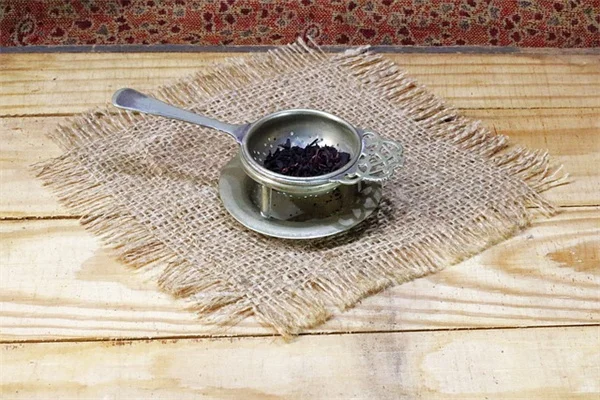Will the U.S. government's bird flu vaccines work? The answer is: Yes, but with limitations. Right now, America has two candidate vaccine viruses (CVVs) that could be used to create H5N1 bird flu vaccines if needed. While these aren't perfect matches for the current strain affecting cattle, studies show they'd offer good cross-protection. Here's what you need to know: we're talking about traditional egg-based vaccines that could produce 100+ million doses within months, but experts worry about vaccine hesitancy slowing uptake. I'll walk you through exactly how this backup plan works and why it matters for your family's health.
E.g. :5 Proven Ways to Cut Sodium for Better Heart Health (Doctors Approve)
America's Bird Flu Vaccine Plan: What You Need to Know
Why We're Talking About Bird Flu Vaccines Now
You might be wondering - why all this fuss about bird flu when it's mainly affecting cows and chickens? Here's the deal: while the current H5N1 strain isn't easily spreading to humans, viruses are sneaky little things that can mutate. That's why health officials are preparing vaccine options now rather than waiting until it's too late.
Think of it like keeping an umbrella in your car - you might not need it today, but when that sudden storm hits, you'll be glad it's there. The U.S. government currently has two candidate vaccine viruses (CVVs) ready to go if needed. These are like blueprints that vaccine manufacturers can use to quickly produce millions of doses.
How Vaccine Production Would Work
Here's the fascinating part - we'd use the same hen egg technology that's been making seasonal flu vaccines for decades. The process goes like this:
1. Take the weakened virus (the CVV)
2. Inject it into fertilized chicken eggs
3. Let the virus grow for several days
4. Harvest and purify the virus
5. Turn it into vaccine doses
It's like teaching your immune system to recognize the bad guys by showing it pictures (the vaccine) before the actual criminals (the real virus) show up. Pretty clever, right?
The Science Behind Bird Flu Vaccines
 Photos provided by pixabay
Photos provided by pixabay
Would These Vaccines Actually Protect Us?
Now here's the million-dollar question: Would these vaccines even work? The short answer is yes, but with some caveats.
The two CVVs we have are good matches - about like your favorite baseball team's backup players. They might not be the star athletes, but they know the game and can get the job done. Studies show they should provide decent protection against the current bird flu strain in cattle.
| Vaccine Type | Protection Level | Production Time |
| Traditional Egg-Based | Good | 3-4 months |
| mRNA (Potential) | Unknown | Faster, but needs testing |
The Immune Response Challenge
Here's where things get tricky. H5N1 vaccines historically haven't triggered super strong immune responses. It's like trying to wake a teenager at 6 AM - you might need to try harder (higher doses) or use some extra motivation (adjuvants).
Dr. Adalja from Johns Hopkins puts it bluntly: "Even when these vaccines match perfectly, the protection they offer is modest at best." But modest protection is better than no protection when facing a potential pandemic.
The Vaccine Timeline: How Fast Could We Move?
From Labs to Arms: The Production Pipeline
If bird flu starts spreading between humans, here's what would happen:
• Day 1-7: Activate emergency plans and send CVVs to manufacturers
• Week 2-8: Mass produce vaccine doses
• Month 3-4: Begin shipping 100+ million doses
That sounds fast, but is it fast enough? During the 2009 H1N1 pandemic, vaccines arrived after the worst was over. However, COVID-19 showed we can move faster now with new technologies.
 Photos provided by pixabay
Photos provided by pixabay
Would These Vaccines Actually Protect Us?
Here's an ironic twist - the same chickens that help make our flu vaccines can get bird flu too! If the virus wipes out chicken populations, we might face egg shortages for vaccine production. It's like your pencil breaking during a final exam - the tool you need is suddenly unavailable.
As of May 2024, over 5 million U.S. poultry birds have been affected. This could potentially slow vaccine production when we need it most.
Beyond Traditional Vaccines: Exploring New Options
The mRNA Vaccine Possibility
Remember those COVID-19 vaccines from Pfizer and Moderna? Scientists are working on similar mRNA bird flu vaccines that could be updated faster than traditional ones. It's like getting software updates for your immune system!
But there are challenges:
- Extreme cold storage requirements
- Need for clinical trials
- Public hesitation about newer vaccine tech
Antivirals and Other Tools
Vaccines aren't our only defense. Medications like Tamiflu could help treat people who get infected. But as Dr. Chin-Hong notes, "Americans often prefer treating illness over preventing it." It's like choosing to repair flood damage rather than buying flood insurance.
The Human Factor: Will People Actually Get Vaccinated?
 Photos provided by pixabay
Photos provided by pixabay
Would These Vaccines Actually Protect Us?
Here's an uncomfortable truth: we could have perfect vaccines ready tomorrow, but they won't stop outbreaks if people refuse to take them. Current COVID-19 booster rates tell a worrying story - only about 22% of U.S. adults are up to date.
Why does this matter? Because vaccine fatigue is real. After COVID-19, many Americans are just tired of thinking about vaccines. It's like being sick of pizza after eating it every day for months - even if it's good for you, the appetite isn't there.
The Anti-Vaccine Movement's Impact
The situation has gotten tougher since 2009. As Dr. Adalja explains, "The anti-vaccine movement is more powerful now than in decades." This creates political and social hurdles that didn't exist during previous flu outbreaks.
Imagine trying to convince your friend to try a new restaurant when they've decided all restaurants are bad. That's the challenge health officials face with vaccination campaigns today.
What This Means For You
Should You Be Worried?
Not right now. The current risk to the general public remains low. But being prepared isn't the same as being paranoid - it's just smart planning. The government is doing its part by preparing vaccine options, and you can do yours by staying informed.
How to Stay Updated
Here's my advice:
1. Follow reliable health sources like CDC
2. Don't panic over every headline
3. Consider getting seasonal flu shots (practice for potential bird flu vaccines)
4. Support scientific research and public health efforts
Remember, the goal isn't to scare you - it's to prepare you. As my grandma used to say, "Better to have it and not need it than need it and not have it." That wisdom applies perfectly to pandemic preparedness too.
Beyond the Basics: What Else You Should Consider
The Economic Impact of Bird Flu
Let's talk dollars and cents for a minute. Did you know the 2015 bird flu outbreak cost the U.S. poultry industry nearly $3.3 billion? That's enough to buy every American a fancy coffee! When farmers lose flocks, grocery prices jump, and workers lose jobs - it's a ripple effect that touches everyone.
Here's something most people don't think about: egg prices. We're not just talking breakfast here. Eggs are crucial for making vaccines, baked goods, and even some cosmetics. When bird flu hits, your morning omelet and flu shot could both get more expensive. Now that's what I call a double whammy!
Wildlife Connections You Might Not Know
Hold onto your hats - this virus doesn't just affect farm animals. Over the past year, we've seen H5N1 in:
- Seals (over 17,000 dead in New England)
- Bears (yes, actual grizzly bears)
- Foxes and skunks
- Even some marine mammals
Why does this matter? Because when a virus jumps between species, that's when things get unpredictable. It's like playing genetic roulette - each jump gives the virus new chances to mutate. And that's why scientists are watching wildlife cases so closely.
The Global Picture: How Other Countries Are Handling This
Europe's Proactive Approach
Here's something interesting - some European countries are already vaccinating poultry against H5N1. France started in October 2023, and others are following suit. They're basically giving chickens their own "flu shots" to stop outbreaks before they begin.
But wait - could vaccinating animals actually help protect humans too? You bet! It's called "One Health" - the idea that human, animal, and environmental health are all connected. By keeping viruses out of farm animals, we reduce the chances they'll jump to us. Smart thinking, right?
Lessons From Asia's Experience
Asian countries have dealt with bird flu outbreaks for decades. Vietnam, for example, has used poultry vaccination programs since 2005. Their experience shows us two key things:
1. Vaccination can dramatically reduce outbreaks
2. The virus still circulates at low levels despite vaccination
It's like dealing with weeds in your garden - you can control them, but they never completely disappear. That's why constant monitoring and vaccine updates are so important.
Your Personal Protection Plan
Everyday Precautions That Actually Help
Now, I know what you're thinking - "Should I stop eating chicken sandwiches?" Relax, that's not necessary! Properly cooked poultry is safe. But here are some simple things that do make a difference:
- Wash your hands after handling raw eggs or poultry (grandma was right about this one)
- Avoid touching wild birds (yes, even those cute park ducks)
- Support local farmers who follow good biosecurity measures
These might seem like small things, but remember - in a pandemic, small actions by millions of people add up to big protection.
Building Your Pandemic Preparedness Kit
While we're not at panic stage, it never hurts to be prepared. Here's what I keep in my "just in case" kit:
| Item | Why It's Useful | Where to Get It |
| N95 masks | Protects against airborne viruses | Hardware stores or pharmacies |
| Hand sanitizer | Kills germs when soap isn't available | Any grocery store |
| 2-week food supply | Helps if supply chains are disrupted | Build gradually from regular shopping |
Notice I didn't say "buy all this tomorrow"? That's because preparedness is a marathon, not a sprint. Add a few items each shopping trip, and soon you'll be set without even noticing the cost.
The Future of Flu Protection
Universal Flu Vaccines: The Holy Grail
Here's some exciting news - scientists are working on vaccines that could protect against all flu strains, not just specific ones like H5N1. Imagine never needing a yearly flu shot again! These vaccines target parts of the virus that don't change much between strains.
Several candidates are in clinical trials right now. One from the NIH showed promising results in early 2024. It's still years away, but the potential is huge. This could be like going from dial-up internet to broadband for your immune system!
Technology That's Changing the Game
Let me tell you about something cool called "surveillance sequencing." Health agencies now use advanced genetic sequencing to track flu viruses in real time. They can spot dangerous mutations almost as soon as they appear.
Think of it like having a weather radar for viruses - we can see the storm coming before the first raindrop falls. This tech helped identify the current cattle outbreak quickly, giving us a head start on vaccine development.
Your Questions Answered
"Is This Another COVID Situation?"
I hear this question a lot, and the answer is no - at least not yet. COVID-19 was completely new to humans, while we've studied H5N1 for decades. We have existing vaccines, treatments, and knowledge that give us a big advantage.
But here's the thing - viruses don't follow scripts. That's why preparation matters. As my science teacher used to say, "Hope for the best, but prepare for the test." Wise words for pandemics too!
"What Can I Do to Help?"
Great question! Here are three simple but powerful actions:
1. Support public health funding - these are the folks working to keep us safe
2. Share accurate information - fight misinformation with facts
3. Stay engaged - public health works best when everyone participates
Remember, we're all in this together. Your actions, no matter how small, contribute to our collective safety. Now that's something to feel good about!
E.g. :How Fast Could We Get an H5N1 Bird Flu Vaccine if a Pandemic ...
FAQs
Q: What are candidate vaccine viruses and how do they work?
A: Candidate vaccine viruses (CVVs) are like the starter kits for making flu vaccines. Think of them as weakened versions of the actual virus that can't make you sick, but still teach your immune system to recognize the real threat. The U.S. currently has two H5N1 CVVs in reserve that could be sent to manufacturers. Here's the cool part: they use the same hen egg technology we've relied on for decades to make seasonal flu shots. The virus grows in eggs for several days before being harvested and turned into vaccines. While not perfect matches for the current cattle outbreak strain, health officials confirm these CVVs should provide decent protection if bird flu starts spreading between humans.
Q: How quickly could the U.S. produce bird flu vaccines?
A: Here's the timeline you should know: federal officials estimate we could ship over 100 million doses within 3-4 months if production started today. But there's a catch - people would likely need two doses, so that's really only enough for 50 million Americans. The process isn't instant because even with our existing systems, it takes weeks to grow the virus in eggs and manufacture the vaccines. Remember how COVID-19 vaccines took time to roll out? This would be similar, though potentially faster since we're using established flu vaccine technology rather than starting from scratch with mRNA.
Q: Why are experts concerned about vaccine effectiveness?
A: Let me break this down simply: H5N1 vaccines historically haven't triggered strong immune responses without help. They either need higher doses (like shouting to get someone's attention) or adjuvants (chemical boosters that amplify the immune response). Dr. Adalja from Johns Hopkins explains that even when perfectly matched, these stockpiled vaccines only provide "modest" protection. It's like having a backup generator - better than nothing during a blackout, but not as good as your main power source. The silver lining? Since we'd likely only target one bird flu strain (unlike seasonal flu shots that combat multiple strains), the protection might be more focused.
Q: What's the chicken egg problem with bird flu vaccines?
A: Here's the ironic twist that keeps health experts up at night: we rely on chicken eggs to grow flu vaccines, but chickens are highly susceptible to bird flu. As of May 2024, over 5 million U.S. poultry birds have been affected by H5N1. If outbreaks continue, we could face egg shortages exactly when we need them most for vaccine production. It's like your printer running out of ink when you're trying to print your resume - the very tool you need becomes the bottleneck. That's why researchers are exploring alternatives like mRNA vaccines, though those would take longer to develop and approve.
Q: Will Americans actually get vaccinated if bird flu spreads?
A: This might be the biggest challenge of all. Current COVID-19 booster rates tell a worrying story - only about 22% of U.S. adults are up to date. Many experts fear "vaccine fatigue" could cripple bird flu vaccination efforts. Dr. Chin-Hong from UCSF points out that after COVID-19, people are simply tired of vaccine discussions. Plus, the anti-vaccine movement has grown stronger since the 2009 H1N1 pandemic. Imagine trying to convince your teenager to clean their room - that's roughly how hard it might be to get some Americans vaccinated, even if a dangerous bird flu outbreak occurs. Public health officials know they'll need creative strategies to boost uptake if the time comes.





